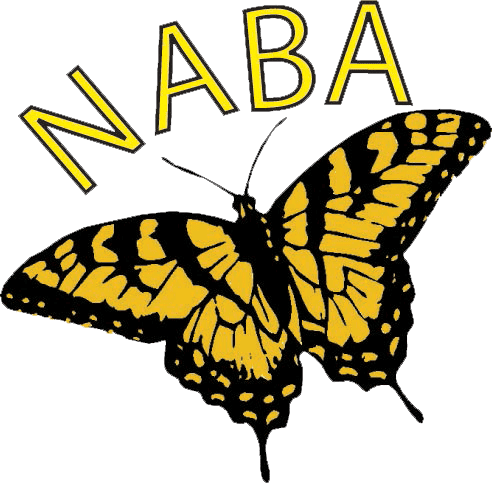![]()
The following article originally appeared in Butterfly Gardener, a NABA publication for members. It originally appeared in Vol 13: No.2, Summer 2008. NABA member Lenora Larson has graciously allowed us to reprint it here.
Host Plant: Violets
By Lenora Larson
“Shrinking as Violets do….”–Thomas Moore
“The timid, bashful violet…”—Phoebe Cary
“The violet, modest and shy as a nun…” William Cullen Bryant
Oh please! Violets shy and retiring? Poets and other English majors should not write about plants because they rarely get it right. Gardeners know that Violets are self-sowing thugs, eager to invade a lawn or flower bed. Of course, I specialize in collaboration with self-sowing thugs since it takes that kind of toughness to survive in Kansas. My fondness for the rampant sprawl of Violets has a double reward: Violet leaves are a dependable ground cover and the only food of the Greater Fritillary caterpillars.
Speaking of shy, Fritillaries take secrecy to the extreme. The female does not lay her eggs on the host plant; rather, she conceals them in nearby debris and the newly hatched caterpillar must find its way. To further confound predators and butterfly gardeners, the night-feeding caterpillar departs the Violet to hide in leaf litter during the day. My ten years of active searching among the Violets produced no caterpillar sightings despite gazillions of adults fluttering about my gardens. But occasionally the Butterfly Goddess intervenes. This spring’s vigorous path weeding of invasive Violets hurled a Great Spangled caterpillar into my sight. The photograph documents this rare find.
In Eastern Kansas, three species of Greater Fritillaries grace us: the magnificent Great Spangled, Speyeria cybole, S. Aphrodite, and the endangered Regal, S. idalia. (In its honor, the very active Kansas City butterfly association has named themselves “The Idalia Society”). Why is the Regal endangered? The host is Prairie Violet, Viola pedatifida, and even a plant thug cannot survive total habitat destruction. Agriculture and suburban sprawl have left less than 1% of the nation’s Tallgrass Prairie, including a small remnant only 3 miles from my farm.
Violets exhibit all the highly flexible attributes of a plant bully. Over 90 species of wild Violets, plus the fancy cultivars, live in every state except Hawaii, spanning zone 3 to zone 10. (Not coincidentally, Fritillary butterflies also live in all these states). These perennials flourish in sun to full shade and from dry prairie to moist swamp. No diseases or pests slow them down and they are enthusiastically fertile. Adding insult to injury, the waxy leaf cuticle confers resistance to most herbicides.
The genus Viola also includes Pansies and many charming cultivars, but natives are always the best choice when setting out the caterpillar buffet. Native species come in shades of, well, violet, plus yellow and white. Identification of wild Violets is tricky since individual species are highly variable and they freely hybridize with each other. In early spring, the dark green leaves emerge from the sneaky rhizomes, which can creep into tight quarters such as sidewalk cracks and among the roots of its neighbors. Spreading is further accomplished by the seeds, which are flung from the curious three-pronged pods into many unwanted locations.
The caterpillars are not alone in their fondness for eating Violets. The edible flowers taste like new peas. Imagine the elegance of a spring salad of lettuce or wild greens with violet blossoms scattered across the top like jewels. Fritillaries and I agree that this bold bully’s virtues far outweigh its vices.
